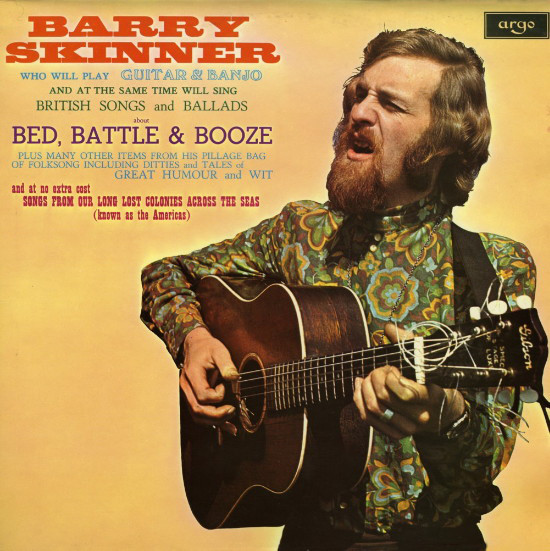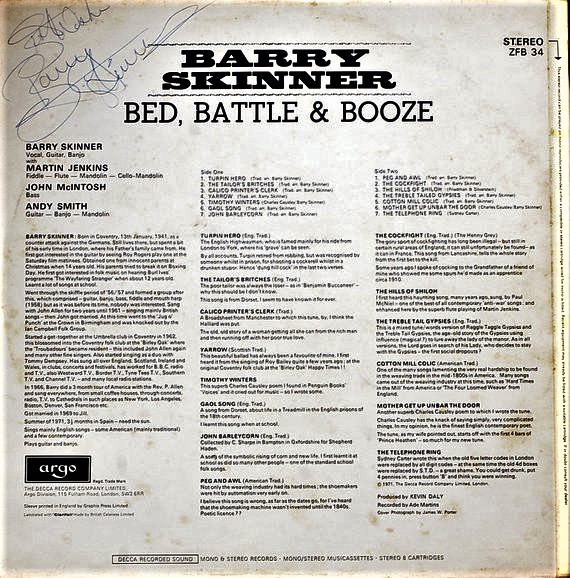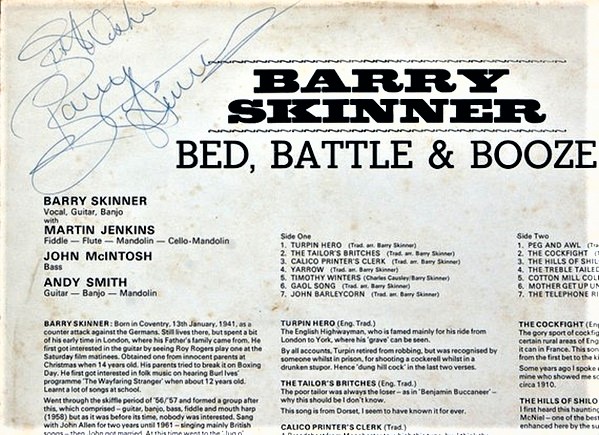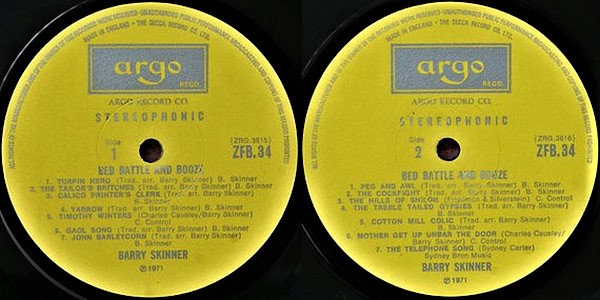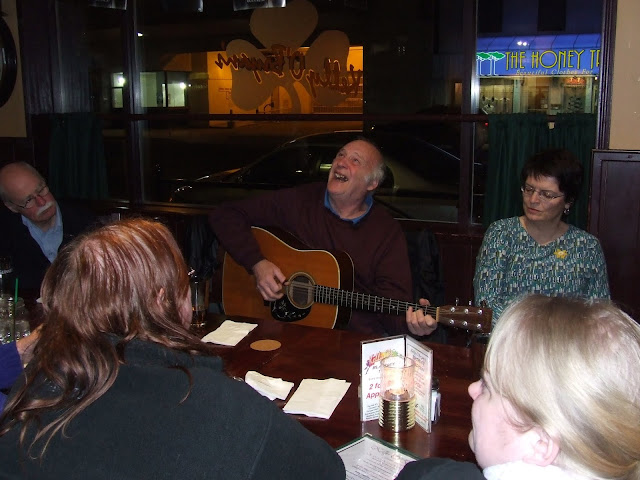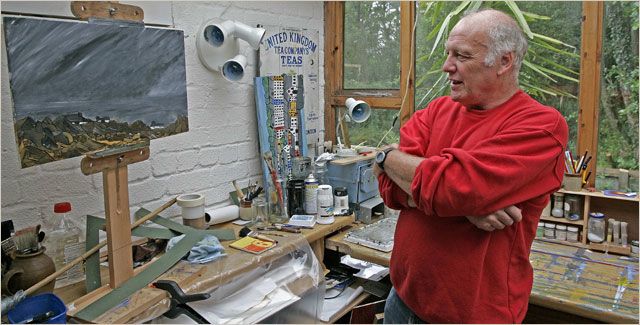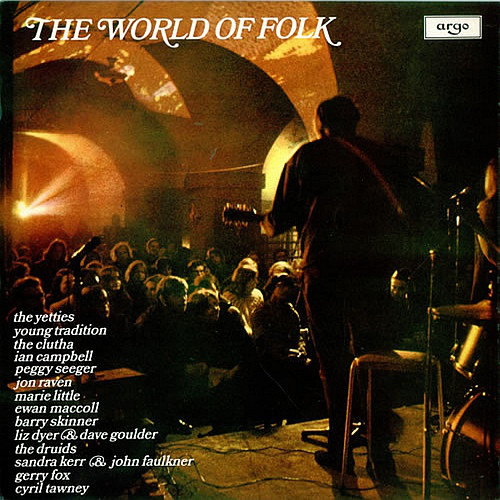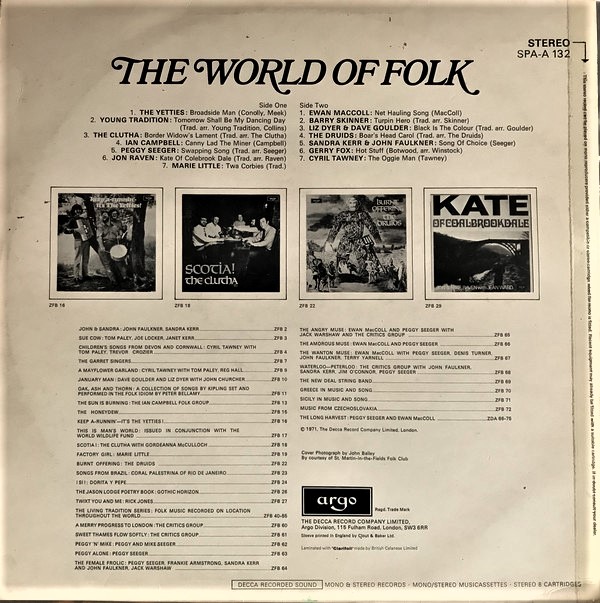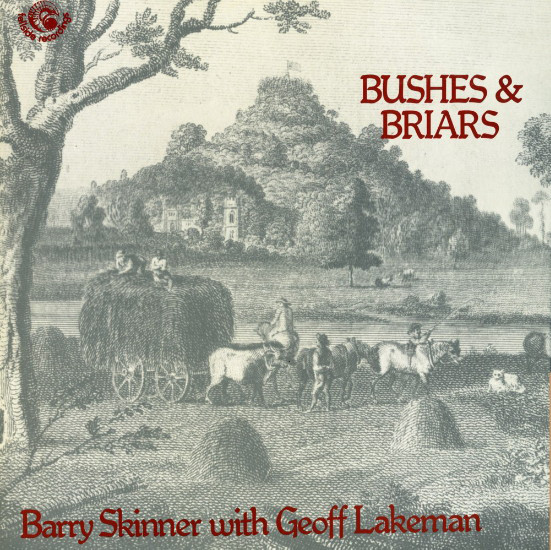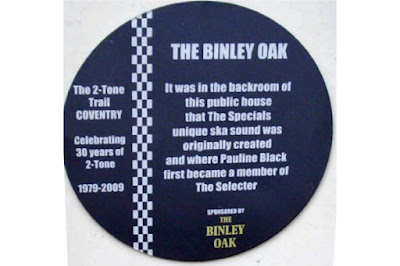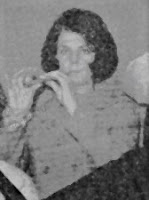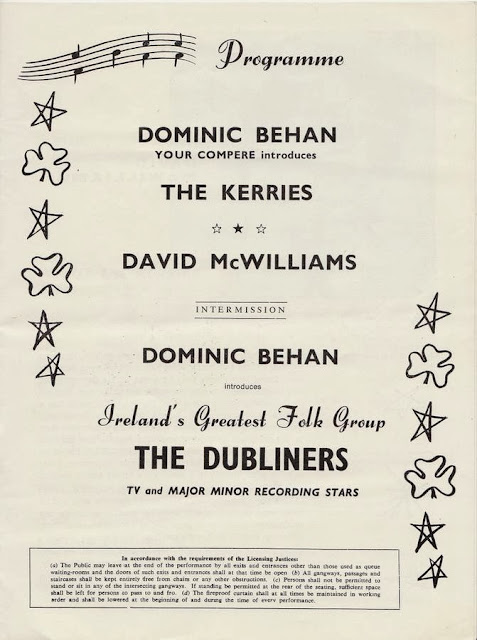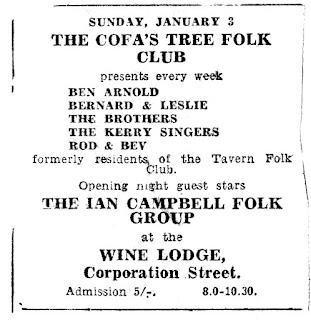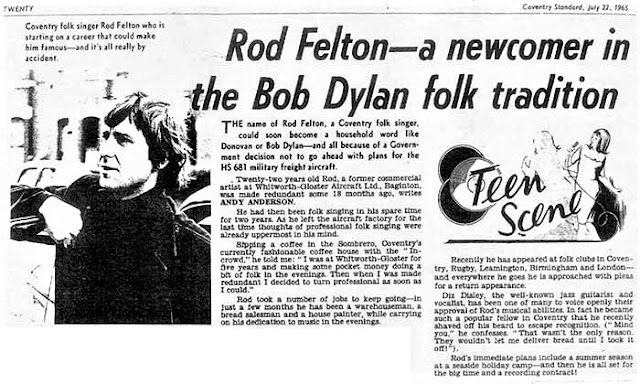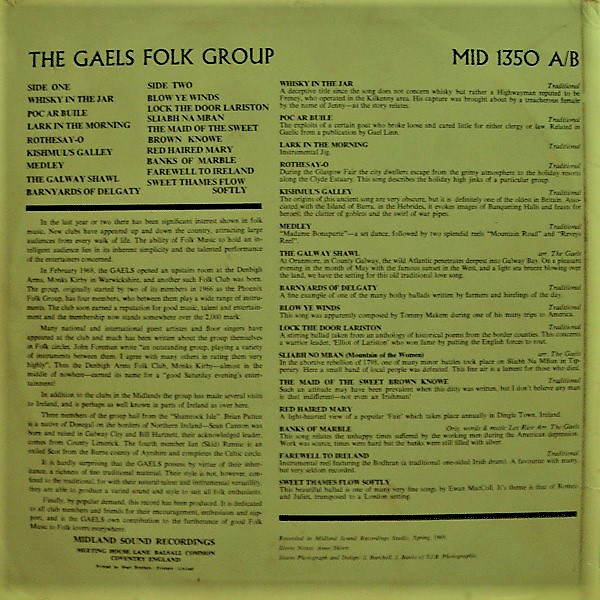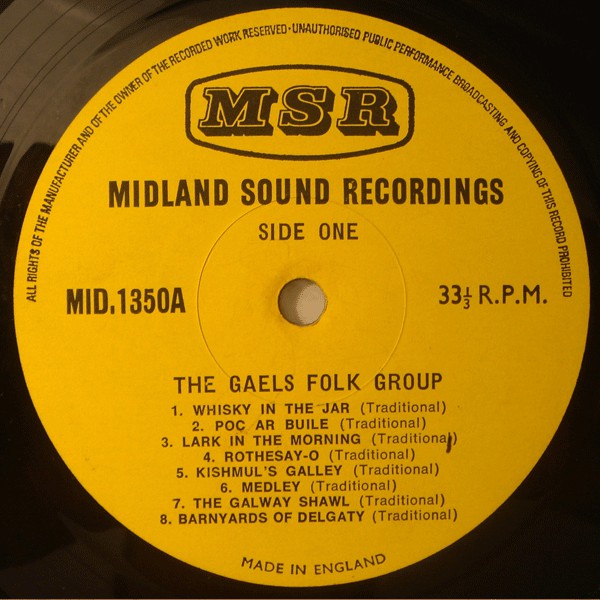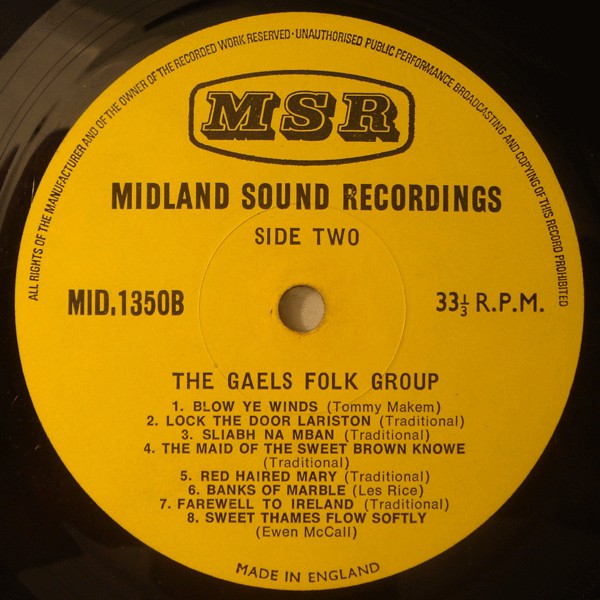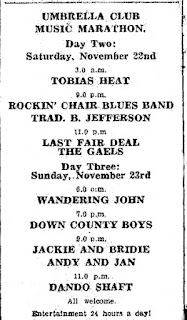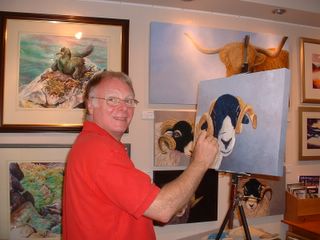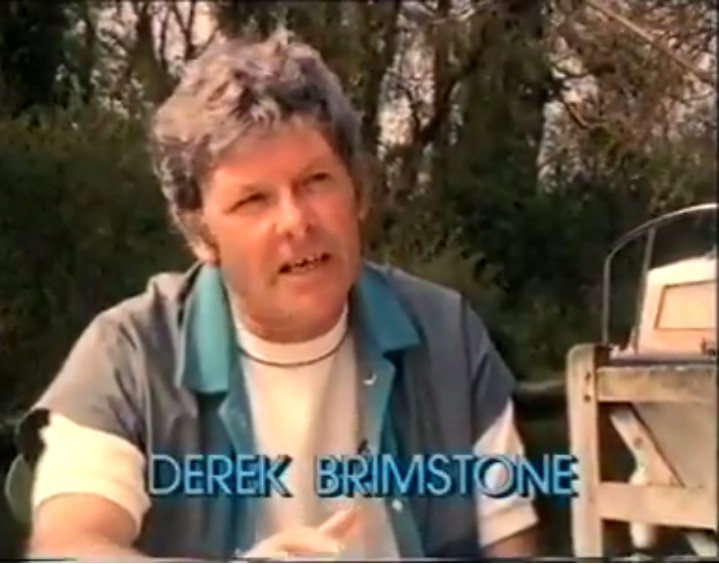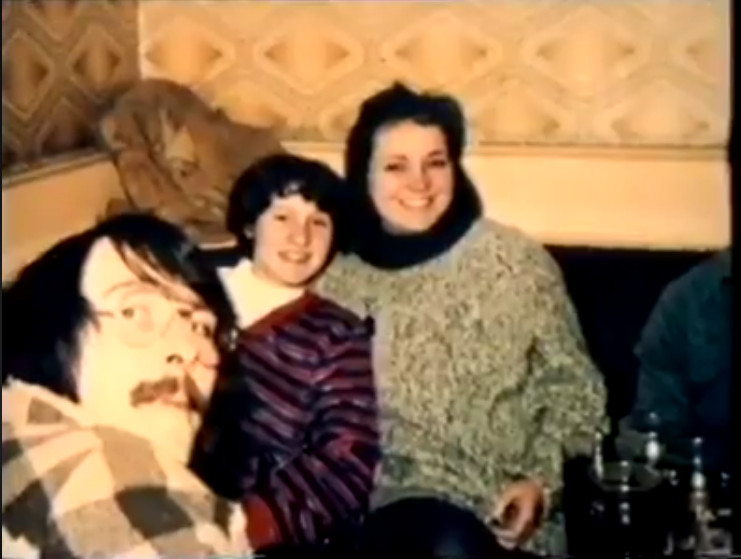Welcome to Artsrainbow. This is your first post. Edit or delete it, then start writing!
Welcome
This blog is a part of the new Hobo – Coventry Music Archives focusing on the Coventry Folk Scene of the 1970’s and beyond.
NOTE – This Post Stays on Top as an Introduction. Scroll down for the latest posts.
Hobo Coventry Music archives started out on Vox blogs in 2007, The site now closed is hosted on Typepad but provides an opportunity to reorganise the material on that site. Hobo was a Coventry Music and Arts Magazine c 1973 -75 run by Trev Teasdel and co-founded with John Bargent (Bo) and the Hobo Workshop at The Holyhead Youth Centre and later the Golden Cross was an important early music center in the history of Two Tone and the Coventry music scene.
This is the Hub to all the Coventry music sites below http://covmusicscenehobo.blogspot.co.uk/
This is the New Version of the Hobo A to Z of bands called Coventry Bands – 1960’s to Now Here https://coventrybands.blogspot.com/
Hobo Coventry Music Archives ( The main blog) (Hobo magazine archives, features, other alternative Coventry mags and more.
Coventry Arts Umbrella Club The Umbrella was established 1955 and opened by the Goons. It produced an important Literary Journal which featured an essay by Philip Larkin. Held lectures by writers like EM Foster. Held the first Coventry Folk club. Was home to Coventry musicians, including some who were later in Two Tone bands.
Coventry Gigs 1960 – present houses Peter Clemon’s Rock of Ages columns for the Coventry Telegraph which charts gigs in Coventry (local bands and famous bands) from 1960 onwards. In addition I’m adding Disco DJ Venue Gig, Coventry Hits, Pete Waterman archives to this section and my 1971 diary of Coventry gigs as a resource.
Coventry Discos / Venues / Studios – Work in progress – includes music shops and more.
Coventry Folk Club Scene
This blog with house copies of Pete Willow‘s Folks Magazine from c 1978 and articles from it. My archive of material from the Coventry Folk Scene in the 1970s and other relevant articles, You Tube and links.
Trev Teasdel
contact hobozine@googlemail.com
Visit Coventry Music Museum
The Heart of England Folk Group
Mary also sent me some photographs of Sneaks Noise which I will add to the Sneaks Noise post here https://www.artsrainbow.com/coventryfolkclubs/2013/04/14/sneaks-noise/
CVfolk Concert for Ukraine Videos from Sunday March 27th 2022
Running total for Ukraine benefit now £1700 and rising. Let’s see if we can hit the £2000 target: https://www.paypal.com/paypalme/cvfolk
The first part of the concert from the afternoon with many artists. Approx 2 hours.
Part Two below, Evening Concert with Rob Halligan, Kristy Gallacher, Pauline Black and Kev Dempsey (Ex Dando Shaft).
Barry Skinner -Tributes to one of the pioneers of the Coventry Folk Club Scene
Barry Skinner was one of the pioneers of the Coventry Folk Scene in the 1960’s, with sessions at the Coventry Arts Umbrella Club, besides other pioneers like Ben Arnold and Ron Shuttleworth. He formed the Troubadours a group formed by Barry Skinner and consisting of John Allen, Dee Solomon, Pete and Marlene Roberts, Bryan Sutton, and Bob Bruce. Terry Illingworth. although not all at the same time. Barry Skinner was the main driving force behind the formation of Coventry Folk Club. Floor singers became a regular feature of the club, partly because the residents didn’t have much material to cover the whole evening every week. Most of the music was traditional folk or skiffle. For well over a year the Binley Oak was the only place in the city where one could go and listen to live folk music on a regular weekly basis although interest spread as more and more people became interested. In 1971 he made an album for Argo Bed Battle and Booze with Martin Jenkins of Dando Shaft on mandolin.
Here’s a Bio from https://www.kinemagigz.com/’s’.htm#Barry_Skinner
Barry Skinner started singing Folk Songs in the late 1950’s. He formed the Coventry Folk
Club in 1962 and sang full time professionally from 1964 to 1980. In sixteen years on the road he sang in innumerable folk clubs throughout the British Isles as well as at concerts, festivals, colleges etc. He also sang at clubs, concerts and festivals in Holland, Germany, Spain and the USA. Along with over 200 TV and Radio appearances, three solo LPs and various compilation albums, it turned into a very busy and enjoyable sixteen years.
1980 brought a change. Barry had always had a great love, knowledge and interest in the canals and had for many years featured a programme of slides and songs about canals. He joined Coventry Education Waterways Scheme, which ran two narrow boats as “floating classrooms” and for the next five years travelled the length and breadth of the navigable canal and river system in England and Wales. He also appeared on many programmes about canals on radio and TV during this period.
In1985 he moved to Snowdonia, to work as an outdoor instructor, taking early retirement in 1998 as Chief Instructor and Deputy Head of Liverpool Hope University’s Outdoor Centre at Plas Caerdeon, near Barmouth in Snowdonia.
Barry sings both Traditional and Contemporary songs, as well as many of his own compositions. He plays guitar and banjo and is accompanied on the keyboard by his partner, Anne. Together they guarantee an entertaining and enjoyable evening.
Barry once had his own ‘Barry Skinner Folk Group’ and played and recorded with Martin Jenkins in the folk/rock band ‘One Day Thomas‘.
Below Barry Skinner with Turpin Hero with Martin Jenkins of Dando Shaft on mandolin John McIntosh bass and Andy Smith guitar.
Below Barry Skinner with Turpin Hero with Martin Jenkins on Mandolin and John McIntosh bass and Andy Smith guitar
Below – Barry Skinner with John Barleycorn and 2 sound bites Admiral Benbow and The Sailor and the String.
| Turpin HeroA2The Tailor’s BritchesA3Calico Printer’s ClerkA4YarrowA5Timothy Winters Lyrics By – Charles Causley Music By – Barry Skinner Lyrics By – Charles Causley Music By – Barry SkinnerA6Gaol SongA7John BarleycornB1Peg And AwlB2The CockfightB3The Hills Of Shiloh Written-By – Friedman*, Silverstein* Written-By – Friedman*, Silverstein*B4The Treble Tailed GypsiesB5Cotton Mill ColicB6Mother Get Up Unbar The Door Lyrics By – Charles Causley Music By – Barry Skinner Lyrics By – Charles Causley Music By – Barry SkinnerB7The Telephone Ring Written-By – Sydney Carter |
This is a tribute on Barry Skinner who pioneered the Coventry Folk scene in the 1960’s,from this site https://www.salutlive.com/2012/10/barry-skinner.html
Barry Skinner, who has died from cancer aged 71, was a popular singer and songwriter who made a strong impression on folk club audiences around the UK, also appearing in continental Europe and the United States, between the late 1960s and late 1970s.
The end of his touring days coincided with the start of a remarkably varied new professional life that was to embrace instruction in mountaineering and other outdoor activities, canal sailing, the construction of custom-made dolls’ houses, photography, painting, camping and writing.
Those close to Barry tell the story of his life and times better than I can.
This is from his son Matt’s eulogy at the funeral earlier this month (October 18):
Barry was born in 1941 and grew up in the Coventry area. As a youngster, he was a keen sportsman, enjoying both football and cricket. He was apparently always taking up new hobbies, many of which would shape his interests in later life. He had something of the “butterfly” about him in this regard, as he would often abandon one hobby to throw himself wholeheartedly into his next.
As a young adult Barry took up climbing and in 1961, he took part in his first mountain rescue on the Isle of Arran. The following year, another of his great loves – music – led him to form The Troubadours, a folk group based in Coventry but with, at the time, nowhere to perform. Typically, Barry’s solution to this problem was to start the first Coventry Folk Club, thus solving the lack of venue problem, and beginning a phase of his life that would see him performing professionally across Britain, Europe and the US for more than a decade. Many of Barry’s own musical compositions were centred on his love of the inland waterways of Britain, and in 1979 he began to preach the “Gospel of the Canals” by working with the Coventry Education Waterways Scheme, which gave young people a hands-on experience of life on narrow boats, run as floating classrooms.
In the mid-eighties, Barry moved to Snowdonia where he became a freelance Outdoor Instructor and where he also bought Turnpike Cottage with his partner, Orianne. When asked why he moved such a long way from the place of his birth, Barry would usually reply, “There weren’t really many career opportunities for a Mountaineering Instructor in Coventry!” Turnpike provided the perfect setting for another of Barry’s creative activities: the designing and building of scale model dolls’ houses. Along with his love of painting, drawing, photography and wood-turning, the cottage soon became a hive of artistic production.
After the sad loss of Oreanne , Barry remained at Turnpike, shortly afterwards retiring from full time employment as Plas Caerdeon’s Chief Instructor: a decision described by Barry as “the best career move you can make!”
Some years later, he met Anne, in whom he found a fellow artistic spirit and the two of them lived at Turnpike, running a popular and successful Bed & Breakfast business.
Many guests were so impressed with Turnpike’s hospitality that they would book returns on a year by year basis. Indeed, several of Anne and Barry’s personal friends began their acquaintance as B& B guests. When they decided eventually to discontinue the Bed and Breakfast business, Barry and Anne bought a motor-home and enjoyed touring Britain, often writing articles for the national camping and caravanning press.
Motorhoming continued until the beginning of this year when Barry’s illness first manifested itself. The trips became shorter but no less enjoyable, the motorhome proving very useful when making long drives for hospital visits.
His final artistic venture was the Helfa Gelf art festival in September, when his paintings were on display to the general public both at home and in local art galleries.
……………….
” I met Barry in Coventry in 1963/4 and he took me round the folk clubs before finally persuading me to get up from the floor at the Troubadours I think it was, I have a photo of Barry and myself performing there. We did this and a few other clubs before I decided I liked singing and wanted to join a group which I did, the Kerries who ran the Cofas Tree Folk club in Coventry. I turned professional whilst living in London and owe it all to Barry . I remember him fondly and talk about his friendship and influence quite often.
Thank you Barry. Gil McWilliams (nee Sowter).
Posted by: Gil McWilliams | January 19, 2017 at 11:50 PM
(Gill was a singer with the Kerries and also the wife of David McWilliams who sand Days of Pearly Spencer.)
………..
“Mother get up, unbar the door, throw wide the window pane …”
That’s the opening line to one of the best songs I know, of any genre. Beautiful and chilling by turns, it tells of a woman, married and settled with a family, who is visited, “outside in the vicarage lane”, by the ghost of an old lover, killed years before at the Battle of Alamein.
Don’t bother trying to find it on iTunes or YouTube or anywhere else that I can think of. It’s as obscure as Charles Causley, the poet who wrote it, and Barry Skinner, the folksinger/songwriter who put it to music and recorded it on an album, Bed, Battle and Booze, in 1971. Don’t bother trying to find that, either. The only copy I have any more is on a tape cassette, with no means to play it….With three under-appreciated albums under his belt, I don’t know whether he became discouraged by the lack of a breakthrough into a wider audience. But in later years, though he never gave music up altogether, Barry turned away from professional singing and moved to Wales. Always a talented artist, he drew, painted, worked as a wood-turner and built exquisite, individually designed dolls’ houses to special order. The closing line to Mother Get Up runs: “I’m had by a dove in the tunnel of love; I can never come home again.”
Barry Skinner has come home. Unbar the door.
I have a signed copy of Barry Skinner-Bed, Battle and Booze, Argo record label 1971.Very nice record. Ernest Sampson
Barry Skinner
You can hear Barry Skinner singing Turpin Hero on this YouTube -fast forward to side 2 and the 2nd track on side 2.
Thanks to Dave Webb for the heads up about two other albums by Barry Skinner
Bass – John McIntosh
Chorus – Paul Adams, Tricia Adams
Concertina, Harmony Vocals – Geoff Lakeman
Harmony Vocals – Linda Adams
Lead Vocals – Geoff Lakeman
Percussion – John Astle
Recorded By, Producer – Paul Adams
Vocals, Guitar – Barry Skinner
A1 The Cheerful ‘Arn
A2 Bushes And Briars
A3 The Dancers Of Stanton Drew
A4 The Buxom Lass
A5 Jack In The Green
Written-By – Martin Graebe
A6 Shepton Mallet Hornpipe/Dorset Four-Hand Reel
B1 Admiral Benbow
B2 Bread And Fishes
Written-By – Alan Bell
B3 Richard Of Taunton Dene
B4 Stone-Cracker John
Written-By – Martin Graebe
B5 The Sailor And The String
B6 Bonaparte’s Lamentation
B7 Wassail Song
ABROAD AS I WAS WORKING
Musicians
Barry Skinner: vocals, guitar
Tracks
Side 1Side 2
Lord of the Dance (2.00)
Peace-Egging (Roud 614; TYG 53) (1.50)
Joseph Baker (3.20)
Knocker-Up Woman (2.20)
Ratcliffe Highway (Roud 598) (2.10)
The Deserter (Roud 493; G/D 1:83) (3.50)
Honiton Lace (3.10)
Peter’s Private Army (2.35)
Arthur McBride (Roud 2355; G/D 1:78) (2.05)
John Blunt (Roud 115; Child 275; G/D 2:321) (2.10)
High Germany (Roud 904; G/D 1:96) (2.30)
Edwin in the Lowlands Low (Roud 182; Laws M34; G/D 2:189; Henry H113) (4.40)
Nottingham Ale (Roud V16327) (2.35)
Twa Corbies (Roud 5; Child 26) (3.30)
Totie (1.15)
Abroad As I Was Working
Barry Skinner (1941-2012)
Stoof Records MU 7417 (LP, Netherlands, 1975)Produced by Job Zomer;
Recorded by Jan Kranendonk at Fendal Sound Recording Studio, Loenen, in October 1975;
Photography by Job Zomer;
Layout by Bert Schinkel
The Coventry Folk Scene 1962 to Present
The Coventry Folk Scene 1962 to Present
(This is a work in progress – More to do!)
Musically, Coventry is rightly renowned for its dynamic 2 Tone movement which put the city on the international music map and focused the attention, like the best of folk music, on urgent social and political issues. Coventry music might divided by genre on the surface but there is a dynamic interplay between all the genres – eg punk and ska / jazz rock and folk clubs often form a life-line for budding songwriters / performers in need of somewhere to get started, or to try out their material before moving on to join a band. Folk clubs and acoustic venues are often a broad church of styles and approaches, it’s not all about traditional music.
In that context, it’s interesting to note that Selecter vocalist, Pauline Black, who started off in Coventry folk clubs as Pauline Vickers c 1978, is now the Patron of CVfolk, an initiative of Pete Willow, with the City of Culture status in mind and which aims “to establish Coventry as a national and international hub for innovative folk performance in its various traditional and contemporary formats“.
Indeed one of the recent Selecter singles Big in the Body took its inspiration from Woody Guthrie’s Bound to Lose –
Compare The Selecter’s update on the song in Big in the Body
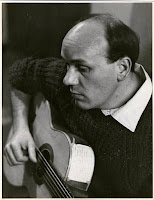 |
| Ben Arnold |
Arnold from Ben’s folk magazine 1967 Folk Crying Out Loud ” The first move towards a folk club began at the Umbrella Club 18, Queen Victoria Road, Coventry’s home grown arts centre. It provided opportunity for the pioneers of Coventry folk like Ron Shuttleworth and Barry Skinner to generate an interest in folk music. A folk club or folk and poetry sessions continued at the Umbrella until 1974. However the Umbrella wasn’t licensed for beer, but it did serve as a starting point.
Lane – where later both the Specials and the Selecter rehearsed. It was called Coventry’s Folk Club. To quote Ben Arnold “Coventry’s first folk club was created out of a common love of what at the time was an esoteric form of expression and desire to bring to the public at large something which had been theirs for hundreds of years.” The Hosts were The Troubadours. a group formed by Barry Skinner and consisting of John Allen, Dee Solomon, Pete and Marlene Roberts, Bryan Sutton, and Bob Bruce. Terry Illingworth. although not all at the same time. Also involved were Brian Curtis, Dick Newton, who later joined the Down Country Boys. Barry Skinner was the main driving force behind the formation of Coventry Folk Club. Floor singers became a regular feature of the club, partly because the residents didn’t have much material to cover the whole evening every week. Most of the music was traditional folk or skiffle. For well over a year the Binley Oak was the only place in the city where one could go and listen to live folk music on a regular weekly basis although interest spread as more and more people became interested.
Ben Arnold was the compare, and among the many acts establishing themselves were The Kerries (Kerry singers). The club was short lived but successful. They moved to the wine lodge in the Burges and the club became known as the Cofa’s Tree. This became one of the most important clubs in the development of folk music in the city, and very well attended. The change had been made to accommodate the growing numbers of audience which regularly topped 200!
More by The Kerries on YouTube Coulter’s Candy https://youtu.be/CXdyeJoIySE
Gill Thurlow of The Kerries, a 24-year-old singer and “Tin Whistle” player was associated
with rock groups in her early singing career but had a strong leaning towards blues which led her to the Kerries. She married David McWilliams who recorded the 1967 hit single Days of Pearly Spencer. They met while she was singing with the Kerries.
Top guest artists were booked every week.
Beverley Martyn (Kutner)
One regular singer / guitarist at the Swanswell Tavern was Coventry born Beverley Kutner
– later better known as Beverley Martyn. She was a singer with a jug band called The Levee Breakers and when she was 16 she recorded her first single. “Babe I’m Leaving You“, which was released on the Parlophone label in 1965. Martyn was then signed as a solo artist to the Deram Records label. In 1966 she released a single, “Happy New Year” (b-side “Where The Good Times Are“), written by Randy Newman, on which she was accompanied by Jimmy Page, John Paul Jones, Nicky Hopkins and Andy White. she was taught guitar by Bert Jansch who encouraged her songwriting. She recorded songs by Cat Stevens (I Love My Dog) and Donovan (Museum). She met Paul Simon who invited her to New York. On the Simon & Garfunkel album Bookends, she contributed to the track “Fakin’ It”, in the middle of which she is heard saying: “Good morning, Mr Leitch, have you had a busy day?” She later appeared at the Monterey Pop Festival on 16 June 1967, as did Simon & Garfunkel. Later she married John Martyn and they made the album Stormbringer together.
Beverley is heard saying: “Good morning, Mr Leitch, have you had a busy day?” Mr Leitch being Donovan Leitch!
Beverley also teamed up with another Coventry legend Rod Felton at the Swanswell Tavern and the Cofa’s Tree (see ‘Rod and Bev’ in the advert)
Rod Felton was just starting out about this time, and a press article in 1965 described him as being in the ‘Bob Dylan tradition’ – of course Dylan was at the top of his game in 1965.
The Gaels
The Gaels
 |
Bill Hartnett
Seán Cannon
Brian Patten
Ian (Skid) Rennie
Whisky In The Jar
Poc Ar Buile
Lark In The Morning
Rothesay-O
Kishmul’s Gallery
Medley
The Galway Shawl
Barnyards Of Delgaty
Blow Ye Winds
Lock The Door Lariston
Sliabh Na Mban
The Maid Of The Sweet Brown Knowe
Red Haired Mary
Banks Of Marble
Farewell To Ireland
Sweet Thames Flow Softly
umbrella Club. 18, Queen Victoria Road with Last Fair Deal (an offshoot of Wandering John).
Torqwood
Torqwood
Torqwood were a Coventry area folk outfit in 1970’s with Ron Ablewhite (Guit / Vocals) – now an artist in the Lake district. I think percussionist Roy Brewster was in this group – both joined Ron joined Trilogy in 1973. An acoustic trio with Al Hatton also on guitar and vocals. Al was an early member of Indian Summer and for a short while in 1972, part of Al Docker’s Coventry supergroup Runestaff with Roy Butterfield, Bill Jackson, Ron Lawrence.
Although I saw Torqwood several times and Roy Brewster played percussion on my floor spot set at a folk club in Coventry one time I can’t say much about them. If anyone has any further information then get in touch.
Ron Ablewhite – Artist Biography
“Ron Ablewhite spent many years in commerce and advertising in the Coventry area,
painting on a part-time basis, before moving to Cumbria in 1993 when he became a professional artist. He created and developed the “Collectables Range”, a unique portfolio of over 60 limited edition prints of scenes in Cumbria and the Lake District. These images capture moments in time, which are reflected in the atmosphere, unique light conditions, buildings and livestock that make Cumbrian images so universally popular.”
City Arms Folk Club (Earlsdon)
The City Arms, for the last 20 years a part of the Wetherspoons chain, has been a popular pub in Earlsdon for over 150 years. The current building has stood since 1930 but a ‘City Arms’ has been on the site since the mid 1800s.
50 years ago the City Arms Folk Club, which attracted some of the country’s most talented musicians to Coventry as well as entertaining a generation of fans, staged its final event. The club first sprang up in 1966 and was initially hosted by Paddy Roberts.
By 1967 it was in the hands of popular musicians Rob Armstrong and Rod Felton who successfully ran this popular club for a good number of years. The pair had already become popular guests at the venue.
The British folk scene of the 1960s and 1970s has a fascinating history. The highs including the discovery of some genuinely wonderful singer songwriters. The lows must have been the endless financial difficulties, that the clubs seemed to be in, required for keeping them going.
The following quotes I collected while researching the Earlsdon club. My apologies for not remembering from where and who:
‘Been going to the folk clubs since 1963. First to Coventry – Barry Skinner, The Kerry’s, Rod etc – and then Earlsdon. Since 1971 I went to Bedworth and other clubs before they all closed. These included Barwell, Brinklow and Nuneaton. I remember Roddy, Dave Bennett, Barry Skinner, The Gaels, Sneaks Noise, too many to remember’.
‘I remember when the Gaels had Owen on fiddle before Brian Patten, do you remember Geoff Smedley and Bennie Christie who were residents at the City Arms?. Benita could down a pint in less than 3 seconds!. And Barry at the Binley Oak, that was the first club I went to, with Roger Bullen who I used to work with’.
‘Rod was always involved with the City Arms, his lovely Mum May used to actually ‘run’ the club, but she did it in Rods name. More or less, Rod and Rob Armstrong were both the residents before they formed the Grunt Band, as was Gentle Touch (Geoff and Benita) and June Tabor was a regular singer there too’.
A Song for Hazel Lester Film 1984
Thanks to Nigel ward, Pete Willow and CVfolk for uploading this treasure of a tribute Coventry folkie Hazel Lester from 1984. I had fled Coventry by then but it’s great to see this footage of those I knew back then – Derek Brimstone, Pete Willow, Dave Ragtime Bennett, Margo Buchanan Smith, Martin and Ray Jenkins etc. It’s a great tribute to Hazel and a great time capsule of the Coventry folk scene and camaraderie therein.
Below is a video with all the musical audio from the above film featuring Derek Brimstone, Dave Bennett, Pete Willow, Mick Cullen, Dennis Clark, Mick Stuart.








